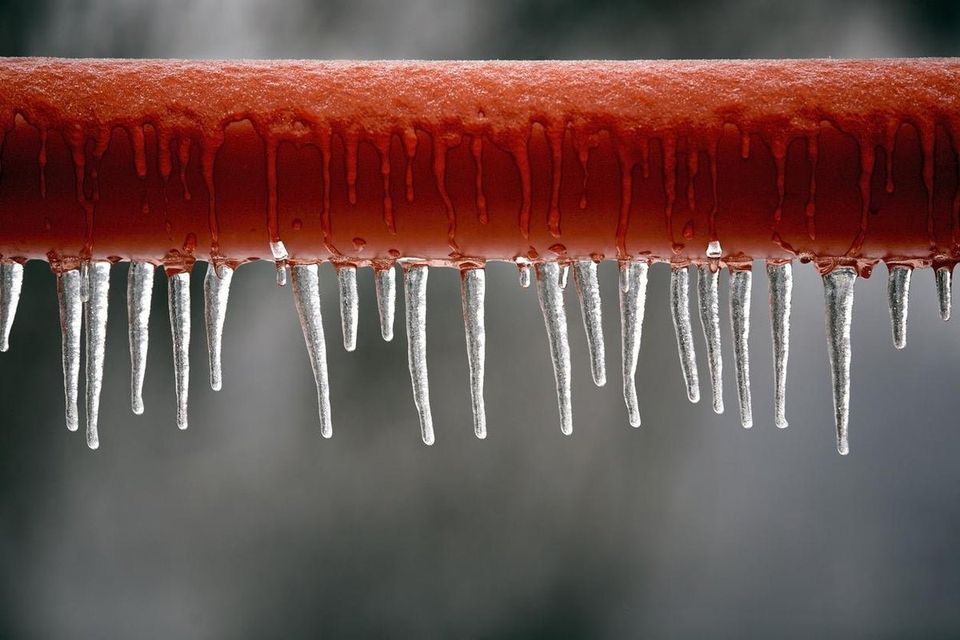Nearly everybody has got their unique conception when it comes to Helpful Tips to Prevent Frozen Pipes this Winter.

Winter can damage your pipes, particularly by freezing pipelines. Below's how to stop it from taking place and what to do if it does.
Introduction
As temperature levels decrease, the threat of icy pipelines boosts, potentially causing pricey repairs and water damage. Comprehending just how to stop frozen pipelines is essential for homeowners in cold climates.
Prevention Tips
Insulating susceptible pipes
Cover pipelines in insulation sleeves or make use of warmth tape to safeguard them from freezing temperature levels. Concentrate on pipes in unheated or outside areas of the home.
Home heating strategies
Maintain interior spaces adequately heated, particularly locations with plumbing. Open closet doors to enable warm air to distribute around pipes under sinks.
Exactly how to recognize frozen pipes
Try to find decreased water flow from taps, uncommon odors or noises from pipelines, and noticeable frost on exposed pipes.
Long-Term Solutions
Architectural modifications
Consider rerouting pipes away from outside walls or unheated areas. Include extra insulation to attics, cellars, and crawl spaces.
Upgrading insulation
Purchase high-quality insulation for pipes, attic rooms, and walls. Appropriate insulation helps maintain constant temperature levels and minimizes the danger of icy pipelines.
Shielding Outside Pipes
Yard tubes and outside faucets
Separate and drain pipes yard tubes before winter months. Set up frost-proof faucets or cover outdoor taps with protected caps.
Comprehending Frozen Pipelines
What creates pipes to ice up?
Pipes ice up when subjected to temperature levels listed below 32 ° F (0 ° C) for expanded durations. As water inside the pipelines ices up, it increases, taxing the pipeline walls and possibly causing them to break.
Risks and damages
Frozen pipelines can lead to water system disturbances, home damages, and expensive repair work. Ruptured pipes can flood homes and cause extensive architectural damages.
Indicators of Frozen Pipes
Recognizing icy pipes early can avoid them from bursting.
What to Do If Your Pipes Freeze
Immediate actions to take
If you suspect frozen pipes, maintain faucets available to soothe pressure as the ice thaws. Utilize a hairdryer or towels taken in warm water to thaw pipes slowly.
Final thought
Avoiding frozen pipelines requires proactive measures and fast feedbacks. By recognizing the reasons, indications, and safety nets, homeowners can shield their plumbing during winter.
5 Ways to Prevent Frozen Pipes
Drain Outdoor Faucets and Disconnect Hoses
First, close the shut-off valve that controls the flow of water in the pipe to your outdoor faucet. Then, head outside to disconnect and drain your hose and open the outdoor faucet to allow the water to completely drain out of the line. Turn off the faucet when done. Finally, head back to the shut-off valve and drain the remaining water inside the pipe into a bucket or container. Additionally, if you have a home irrigation system, you should consider hiring an expert to clear the system of water each year.
Insulate Pipes
One of the best and most cost-effective methods for preventing frozen water pipes is to wrap your pipes with insulation. This is especially important for areas in your home that aren’t exposed to heat, such as an attic. We suggest using foam sleeves, which can typically be found at your local hardware store.
Keep Heat Running at 65
Your pipes are located inside your walls, and the temperature there is much colder than the rest of the house. To prevent your pipes from freezing, The Insurance Information Institute suggests that you keep your home heated to at least 65 degrees, even when traveling. You may want to invest in smart devices that can keep an eye on the temperature in your home while you’re away.
Leave Water Dripping
Moving water — even a small trickle — can prevent ice from forming inside your pipes. When freezing temps are imminent, start a drip of water from all faucets that serve exposed pipes. Leaving a few faucets running will also help relieve pressure inside the pipes and help prevent a rupture if the water inside freezes.
Open Cupboard Doors
Warm your kitchen and bathroom pipes by opening cupboards and vanities. You should also leave your interior doors ajar to help warm air circulate evenly throughout your home.

I ran across that blog post about Prevent Frozen Pipes when browsing on the web. Kindly pause to promote this article if you appreciated it. Many thanks for going through it.
Schedule Today!